OpenAI is a leading artificial intelligence research laboratory that has been making strides in advancing the field of AI. In this comprehensive overview, we will delve into the history, mission, funding, projects, and partnerships of OpenAI, unlocking its secrets and unveiling what makes it so successful.
From its work on autonomous vehicle development to machine learning applications, OpenAI is pushing boundaries and set to have an impact on many industries. It is clear why OpenAI has become one of the world's most popular AI research laboratories. As we explore further, get ready to be amazed!
Short Summary
OpenAI is a capped-profit company founded in 2015 to develop and promote artificial general intelligence. It has developed powerful tools such as OpenAI Gym and Universe, and its corporate and organizational structure is designed to focus on advancing its mission while capping profits. Microsoft and OpenAI have a multiyear partnership to develop advanced AI technology, with OpenAI projected to make $1 billion by 2024.
What is OpenAI?
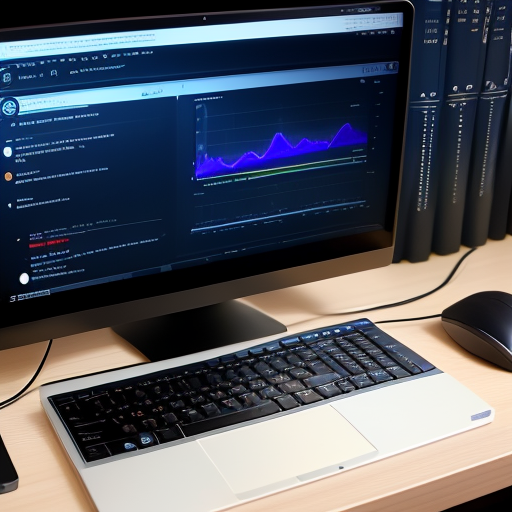
OpenAI is an organization that conducts research and development in the field of artificial intelligence. Founded in 2015 by tech luminaries such as Elon Musk, Sam Altman, Peter Thiel, Reid Hoffman, and Greg Brockman, OpenAI's mission is to advance digital intelligence in the way that is most likely to benefit humanity as a whole. OpenAI strives to promote and develop artificial general intelligence (AGI) in a responsible and beneficial manner.
OpenAI is structured as a for-profit company, with a board of directors, a Chief Scientist, and other investors. However, OpenAI also operates as a capped-profit organization, meaning that its profits are capped at a certain level and any excess profits are reinvested in research or distributed to a non-profit foundation. This structure enables the company to both make a profit and reinvest in research for the benefit of society.
OpenAI has a number of initiatives underway to advance AI capabilities and research. OpenAI Gym is an open-source toolkit for developing reinforcement learning algorithms, while OpenAI Universe is a platform for training AI agents in virtual environments. OpenAI also publishes large language models such as GPT-3 and GPT-4, which are used to develop AI tools and applications. OpenAI also plans to release generative AI tools to further facilitate the development of AI applications.
OpenAI also encourages regulatory oversight of AI development to ensure the technology is developed responsibly. The company is strongly committed to its mission to benefit humanity and has stated that it “cares deeply about the right structure to ensure that the benefits of AI are widely and fairly shared”. OpenAI also plans to invest up to $1 billion to develop AI capabilities and research, and to ensure that its users are equipped with the tools they need to succeed in the AI industry. OpenAI's goal is to make sure that the AI industry works for everyone, not just those with the resources to access the technology.
OpenAI's core focus is the development of friendly AI that benefits society as a whole. Through its research and initiatives, OpenAI is helping shape the future of the AI industry and develop AI tools and applications that will help improve the lives of its users.
Who owns OpenAI?
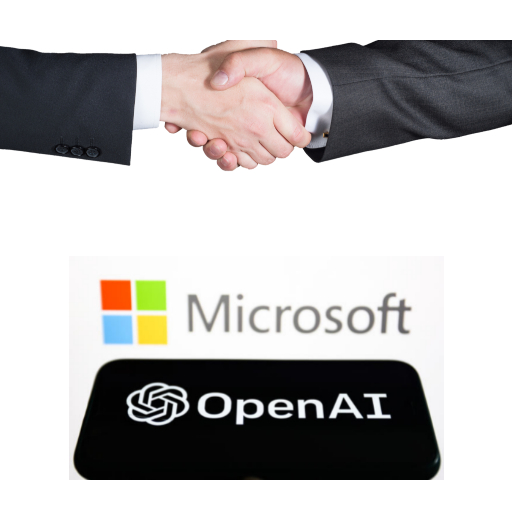
OpenAI is a private company, owned by Microsoft (49 percent), existing shareholders (49 percent), and the rest by OpenAI employees. The company was founded in 2015 as a non-profit research company by Elon Musk, Greg Brockman, Ilya Sutskever, John Schulman, and Wojciech Zaremba. However, Elon Musk resigned from OpenAI's board in 2018 due to a conflict of interest with his work at Tesla. In 2019, OpenAI shifted to for-profit status, in order to increase its ability to raise capital while still serving its mission.
OpenAI is led by a Board of Directors, which includes Microsoft’s Chief Scientist, Peter Lee, and AI researcher and OpenAI co-founder Greg Brockman. OpenAI’s Chief Scientist is renowned AI researcher and co-founder Ilya Sutskever. Since its founding, OpenAI has received investments from a number of investors, including Thrive Capital and Founders Fund, who together own a large share of the company.
In November 2022, OpenAI unveiled ChatGPT, their AI chatbot. It was a breakthrough invention that could answer almost any query on various topics. It was declared the world's most advanced chatbot. OpenAI LP, a hybrid of for-profit and nonprofit, was established in 2020. This "capped-profit" company is owned by Microsoft (49 percent), existing shareholders (49 percent), and the rest by OpenAI employees. The company has a $1 billion endowment and a 100x cap on any investment.
The goal of OpenAI is to develop artificial general intelligence (AGI) and make it freely available to the world so that everyone can benefit from the development of AGI. OpenAI believes that by closely collaborating with the world, they can ensure that society benefits from the development of AI and that the development of AI will have a positive effect on the future of humanity.
OpenAI is a hybrid of a for-profit and nonprofit, which is called a "capped-profit" company, with a $1 billion endowment and a 100x cap on any investment. By allowing OpenAI to operate as a for-profit organization, the company can more easily raise capital to continue developing AI, while also using its resources to serve its mission of developing artificial general intelligence for the benefit of all humanity.
When was OpenAI founded?
OpenAI was founded in December 2015. It was co-founded by Tesla and SpaceX founder Elon Musk, Y Combinator president Sam Altman, and other investors. OpenAI was established with the goal to develop and promote artificial general intelligence (AGI), and making it available to everyone. OpenAI was founded as a for-profit entity, however, its founders also envisioned a non-profit arm to freely collaborate with other research institutions.
Since then, OpenAI has been working to unlock the secrets of Artificial Intelligence. From the beginning, OpenAI has been on a mission to create a society that is proactively benefiting from the development of artificial general intelligence. In April 2016, OpenAI released their first product, the OpenAI Gym, an open-source toolkit for developing and comparing reinforcement learning algorithms. A few months later, OpenAI published their Universe platform, which enables agents to interact with a diverse set of environments. In December 2016, OpenAI announced its plans to launch OpenAI LP, a for-profit company backed by a billion-dollar investment.
In 2018, OpenAI launched its commercial product, OpenAI Five, and stated its plans to extend its research into robotics and self-driving cars. In 2019, OpenAI announced that it had successfully trained its AI agents to play the game of Dota 2 at an international level. OpenAI continues to focus on research and development to advance the state of the art in AI.
In 2020, OpenAI announced a new partnership with Microsoft, aimed at accelerating AI development and democratizing access to AI technology.
OpenAI Gym and Universe

OpenAI Gym and Universe are two of the major tools developed by OpenAI for developing and testing reinforcement learning algorithms.OpenAI Gym was released in April 2016 and is an open-source Python library for developing and comparing reinforcement learning algorithms by providing a standard API to communicate between different environments. OpenAI Universe is an advanced software platform developed to measure and train the general intelligence of an AI. It can be used across websites, games, and other applications for advanced results. It is able to measure and train an AI's general intelligence by having it interact with websites, games, and other applications.
OpenAI released Prometheus, a new AI-powered Bing leveraging OpenAI as the core and foundational for the new conversational interface of Bing (called Bing Chat). The new AI-based features added to Microsoft's Edge browser are a result of this partnership. In addition, OpenAI also announced the launch of its popular generative AI-based research toolkit, OpenAI GPT. OpenAI GPT is an advanced AI technology that can generate human-like text, with the ability to generate content on the fly.
OpenAI has also developed OpenAI Gym and Universe for other applications, such as training a single agent to perform any task a human can complete with a computer. OpenAI Gym and Universe have been used to develop and evaluate reinforcement learning algorithms, as well as the generative AI research toolkit, OpenAI GPT. The company has also developed "Prompt Engineering" to help smooth out the drawbacks of OpenAI's GPT, such as providing answers even when some context might be missing. OpenAI has also released "ChatGPT Professional", a paid version of the popular generative AI research toolkit, which is suitable for fun creative inspiration and other tasks.
OpenAI Gym and Universe are powerful tools that have enabled OpenAI to develop and test reinforcement learning algorithms and continue to push the boundaries of AI research. The company has been able to leverage its technology to partner with Microsoft and develop AI-based features for its Edge browser, as well as to create its own AI-powered chatbot, Prometheus. OpenAI Gym and Universe have also been used to develop generative AI research toolkits, such as OpenAI GPT. OpenAI Gym and Universe are just two of the many resources OpenAI has available to help it on its mission to develop general intelligence.
Musk Resignation
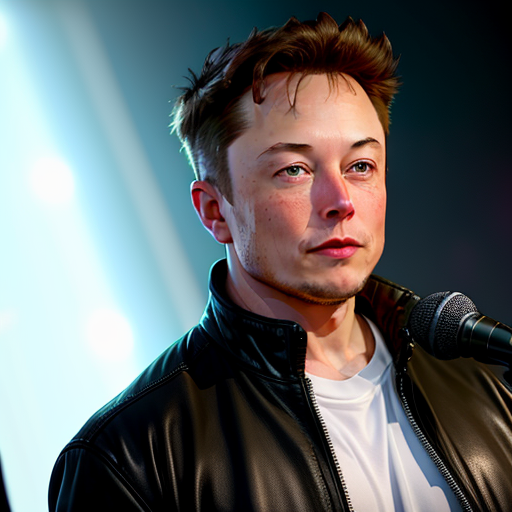
In 2018, Elon Musk resigned from OpenAI citing a conflict of interest with his work at Tesla.OpenAI, founded in 2015, is an artificial intelligence research laboratory aiming to develop artificial general intelligence (AGI) through training machines to freely collaborate with humans. Unlike other companies, OpenAI was founded as both a for-profit and a non-profit, with Musk and other investors putting in $1 billion. Elon Musk was the former CEO of the company and its president, Sam Altman, took his place as chief executive officer.
At the time of his resignation, Musk proposed that OpenAI should actively involve regulatory oversight. He strongly suggested that they work towards developing A.I. in a way that is safe and beneficial to humanity. This suggestion came from his fear that A.I. could cause greater harm than good if left unchecked. His resignation came in tandem with other investors such as Reid Hoffman, Peter Thiel, and Amazon Web Services.
These events have shaped OpenAI's corporate and organizational structure and will continue to influence its future. The company is now a non-profit organization, with a board of directors and a mission to make sure that AI is developed safely, ethically, and beneficially. OpenAI is dedicated to developing general intelligence and ensuring that its development is regulated and monitored.
As OpenAI continues to grow, the legacy of Elon Musk's resignation will live on and continue to shape the company's trajectory.
How does OpenAI corporate and organizational structure work?
OpenAI is an artificial intelligence research laboratory that transitioned into a for-profit organization in 2019 and its corporate and organizational structure is organized around two entities. The first is OpenAI, Inc., a single-member Delaware LLC controlled by an OpenAI non-profit. The second entity is OpenAI LP, a capped, for-profit organization. OpenAI Inc. is responsible for research, engineering, and product development, and OpenAI LP is responsible for investments and profits. The company’s strategy is to cap its profits, and any profits made beyond the cap are reinvested into further research and development of artificial general intelligence (AGI).
The OpenAI board of non-employee members includes Adam D'Angelo, Reid Hoffman, Will Hurd, Tasha McCauley, Helen Toner, and Shivon Zilis. In addition, OpenAI has released several large language models, launched the OpenAI Gym platform, published numerous research papers, and announced numerous partnerships with corporations such as Microsoft. OpenAI has also announced the planned launch of OpenAI Ventures, a venture capital arm of the company.
Understanding OpenAI's corporate and organizational structure is essential to understanding the implications of its partnership with Microsoft and the impact of Elon Musk's resignation from the board of directors. OpenAI's corporate structure is designed to ensure that the company's focus remains on advancing its mission of creating artificial general intelligence and not on making a profit. By capping its profits, OpenAI ensures that any money made is reinvested into further research and development. This model allows OpenAI to remain focused on its core mission while still remaining profitable.
The Microsoft-OpenAI Deal

The Microsoft-OpenAI deal is a multiyear, multibillion-dollar investment from Microsoft to OpenAI.The investment was announced in July 2019 and is aimed at accelerating OpenAI's development of artificial intelligence (AI) systems and providing Microsoft with access to some of the most advanced AI systems. Under the deal, Microsoft will get a 75% share of profits until recouping the $10 billion invested, then a 49% stake in future profits until reaching the cap. The unique structure of this deal allows Microsoft to benefit from OpenAI's AI technology while at the same time allowing OpenAI to become a for-profit company and remain independent.
OpenAI's technology is already being integrated into Microsoft's core products, starting with Bing. Microsoft is also leveraging a layer called Prometheus, which interacts with OpenAI to make it viable within search. This partnership has allowed OpenAI to become a for-profit company and has provided Microsoft with access to some of the most advanced AI systems. It has also enabled Microsoft to develop an AI-infused version of Bing, as well as its own conversational interface and natural language processing capabilities.
In addition, OpenAI has released its own open-source projects such as OpenAI Gym and Universe, as well as its own software suite called OpenAI LP. OpenAI also announced its Generative Pre-trained Transformer (GPT) model, a neural network that can generate extremely human-like text. OpenAI has also launched its own research arm, OpenAI Inc., which is dedicated to developing advanced AI technologies.
This partnership between Microsoft and OpenAI is a major step forward in the development of artificial general intelligence (AGI) and the advancement of AI in the world. Through this partnership, Microsoft is able to benefit from OpenAI's AI technology and OpenAI can continue to develop its technology and research. This partnership has allowed OpenAI to become a for-profit company and has provided Microsoft with access to some of the most advanced AI systems. By working together, both companies are working towards a future where AI can be used to benefit society.
Meet Sam Altman: OpenAI CEO, Prepper, Silicon Valley Royalty
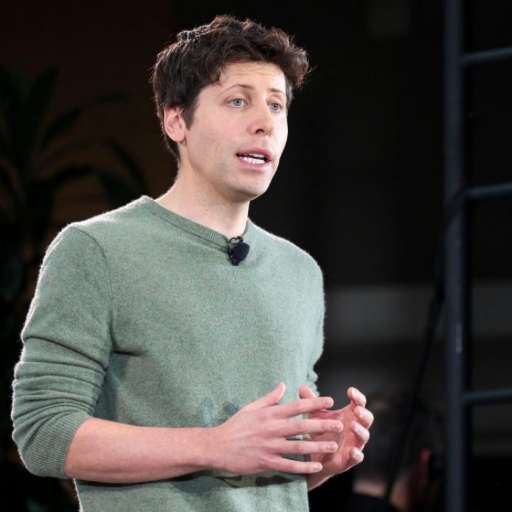
Sam Altman is an American entrepreneur, investor, and programmer who is the current CEO of OpenAI.He previously co-founded Loopt and was the former CEO of Y Combinator, a seed accelerator for tech startups. Altman is also the chief technology officer of OpenAI Inc., a company that works to develop artificial intelligence (AI) technologies and open-source software. Altman has made headlines in Silicon Valley due to his ability to develop and manage successful companies.
Altman is also known for his prepping skills. He famously purchased a plot of land in Big Sur, California, which he uses to prepare for emergency and survival situations. He has equipped the plot with guns, gold, potassium iodide, antibiotics, batteries, water, gas masks from the Israeli Defense Force, and other supplies. This demonstrates his commitment to the survival and his understanding of the potential risks of artificial intelligence.
Altman also interviewed Trump supporters around the US, including Muslims, Mexicans, Black people, and women. He found that many of those he approached were afraid to share their names and political beliefs due to fear of being targeted by those in Silicon Valley who disagreed with them. This project demonstrated Altman's dedication to understanding both sides of the political spectrum, and his willingness to talk to people outside of Silicon Valley.
Altman's experience as an entrepreneur and investor, his prepping skills, and his dedication to understanding all political viewpoints provide a comprehensive overview of OpenAI and its potential. His vision for the company is to maximize its potential to benefit the world, while at the same time making sure to keep the company's profit capped. Under Altman's leadership, the company's ambition has grown 10x, allowing OpenAI to become a leader in the development of artificial intelligence technologies.
Sam Altman's background, his role in OpenAI, and his prepping skills provide a comprehensive overview of OpenAI and its potential.
Key Takeaways
This section will provide a summary of the key takeaways from the article, which include the ownership structure, founding date, OpenAI Gym and Universe, Musk's resignation, corporate and organizational structure, and the Microsoft-OpenAI deal.OpenAI is a for-profit, AI-focused research lab with a non-profit parent foundation, founded in 2015 by tech moguls such as Elon Musk and Sam Altman. OpenAI Gym and Universe are two of its most popular projects, offering open-source libraries of reinforcement learning environments and a platform for training AI agents in a variety of virtual worlds.
In 2018, Musk resigned from the company due to disagreements over its transition to a for-profit model. The company's corporate and organizational structure has since been restructured, with Sam Altman appointed as CEO and a new board of individual investors.
A $1 billion deal with Microsoft was announced in 2019, offering early access to OpenAI's large language model, GPT-3. This deal gave Microsoft access to OpenAI's latest technology and provided the company with additional resources to develop new features.
By utilizing the Vanity Fair, New Yorker, and Dall-E models, OpenAI is looking to revolutionize society with faster response times and greater accuracy. With a projected profit of $1 billion by 2024, OpenAI has the potential to become a major player in the AI industry and become a large source of revenue for the company and its individual investors.
By understanding the key takeaways of OpenAI, readers can gain a comprehensive overview of the organization and its implications.
Connected Business Model Analyses
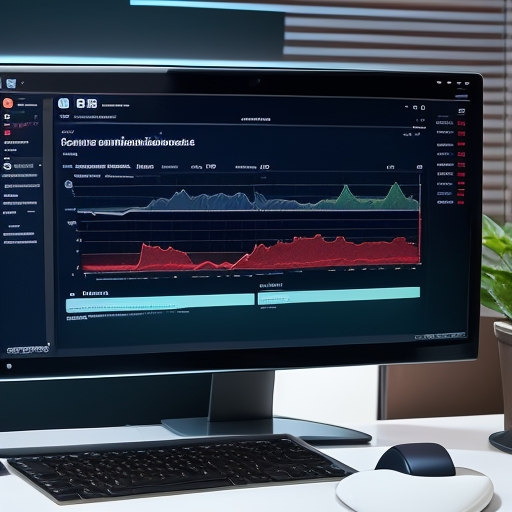
Connected business model analysis is a comprehensive approach to understanding how a business operates and creates value for its customers. It is an analysis tool that looks at the various customer segments, delivery channels, and other factors that go into a company’s business model. It seeks to understand how customers are segmented and how their preferences play into the business model.
OpenAI is a for-profit company that specializes in artificial intelligence and machine learning. They use proprietary data and generative models, along with their popular transformer model, to create new products and services for their customers.
By understanding the connected business model analysis, businesses can better understand their customers and develop strategies to better serve them. This is especially important for OpenAI as they are constantly innovating and developing new technologies and applications. By understanding their customers’ needs and preferences, OpenAI can better develop products and services that meet their needs.
Summary
OpenAI is a special type of organization that prioritizes research and development instead of maximizing profits. Established in 2015 by Elon Musk and other investors, OpenAI has been exploring the potential applications of Artificial General Intelligence (AGI) by developing powerful tools such as Gym and Universe. Despite the departure of the founder, the organization continues to lead the pack with its mission to benefit humanity through AGI. The company is on track to reach a projected profit of $1 billion by 2024 with their recent partnership with Microsoft, who also owns 49 percent of the company.
At its core, OpenAI has always understood the importance of staying true to its cause. From Sam Altman’s mission to use “connected business model analysis” to its commitments to limit profits, OpenAI serves as an example for other organizations that aim to use technology to make the world a better place while simultaneously turning a profit.
Although most businesses tend to put financial gains first, OpenAI is proving that sometimes dreaming bigger can actually help achieve greater success - and that’s something all organizations can learn from.
Frequently Asked Questions
Can I use OpenAI for free?
No, you cannot use OpenAI for free. However, there are multiple ways to access it at a discounted rate or with limited functionality. These include signing up for a free OpenAI account, using Microsoft Edge or Bing, or trying out OpenAI Playground at no cost. Additionally, developers can access OpenAI through a chatbot on HuggingFaceHuggingFaceHugging. Face, Inc.
Does Elon own OpenAI?
No, Elon Musk does not own OpenAI. He founded the non-profit organization and served on its board in 2018, but later made the decision to walk away due to disagreements with its leadership.
Microsoft is currently in control of the company.
Is OpenAI chatbot free to use?
Unfortunately, the OpenAI Chatbot is not free to use. It requires significant investments of resources in order to run, with estimates that it spends around $3 million per month on the platform.
Therefore, if you wish to utilise OpenAI Chatbot's services, you will need to factor in potential costs.
Who is the CEO of OpenAI?
Sam Altman is the CEO of OpenAI. He has been in the position since the company's founding in 2015, and recently addressed a letter from tech leaders calling for a pause on artificial intelligence development.
Sam Altman has been a vocal advocate for the responsible development of AI and has been a leader in the field since his involvement with Y Com.
Does Elon Musk own OpenAI?
No, Elon Musk does not own OpenAI. He previously held a stake in the company but sold it to Microsoft in 2018, citing potential conflicts with Tesla's own AI work at the time.
Since then, he has been openly critical of OpenAI and its products, which likely led to his disownment of the company.
